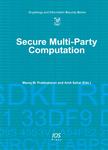版权所有:内蒙古大学图书馆 技术提供:维普资讯• 智图
内蒙古自治区呼和浩特市赛罕区大学西街235号 邮编: 010021

作者机构:Department of Computer Science National Chengchi University Taiwan Shenzhen Key Laboratory of Internet Information Collaboration Shenzhen School Harbin Institute of Technology China Department of Mathematics Soochow University Taiwan
出 版 物:《Cryptology and Information Security Series》 (Cryptology Inf. Secur. Ser.)
年 卷 期:2014年第12卷
页 面:17-28页
核心收录:
主 题:Authentication
摘 要:Radio Frequency IDentification (RFID) is a radio communication technique. It identifies specific targets and acquires related data from the backend database by using radio frequency signal and no physical touch needed. Because of its advantages of low cost and remote identity-recognition, this technology has been widely used in many applications. However, the information, which is transmitted via radio signal, is easily eavesdropped and traced by an attacker. Therefore, it is important to design a secure RFID protocol which can ensure the authentication of the origin and the integrity of the transmitted information. Researchers have put their efforts into this field and proposed many solutions to deal with these issues. In particular, in 2012, Bassil et al. introduced an ultra-lightweight RFID protocol based on a physical unclonable function (PUF), which means that the tags in the RFID architecture are unclonable. However, the insecurity of the scheme has been pointed out recently. In this paper, we will propose a new ultra-lightweight RFID protocol based on PUF that can overcome the security loopholes occurs in Bassil et al. s protocol. © 2014 The authors and IOS Press. All rights reserved.